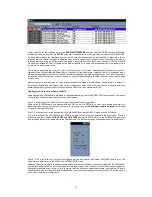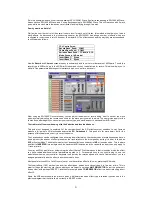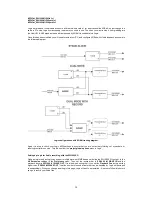
29
Chapter 6
Getting it all to work in…Emagic Logic Audio
Logic Audio for Windows and Macintosh is regarded by many as the ‘serious power-users sequencer’. It has a more
complex learning curve than many other applications, but is hugely rewarding to work with when you grasp the huge
number of features that it offers.
With the SW1000XG in mind, how do we go about setting up Logic to work with it? There are several ways, which we
shall examine to getting the best out the SW1000XG with Logic, the first of which involves our old friend XGEdit once
more.
XGEdit and Logic
Well as we have seen in previous chapters, running XGEdit with most applications is one of the best ways to control
the SW1000XG functions. To do this as we have seen on the Windows platform, it is necessary to install Hubis
loopback driver. Emagic Logic Audio however has a unique way of handling MIDI ports (both physical and virtual)
that it finds in your computer, in that it will attempt to ‘grab’ all available ports. Users will be required to make a few
fine adjustments to the Windows
win.ini
file to get around this, which can seem a bit daunting, but really is quite
simple.
To open up the
win.ini
file use your windows sysedit.exe file to open up in a text editor format your system specific
details. It is wise before doing this to make sure you have backups of all of the files that you intend to modify.
Scrolling through the
win.ini
file you will come across an entry for Emagic Logic, which will list all active MIDI ports in
your machine. You will have needed to run Logic at least once prior to opening up the
win.ini
file, after your
SW1000XG is installed of course!
So, if you have not yet done so, close down sysedit, open Logic and exit it again. Now the
win.ini
file entries for all
existing MIDI drivers will be created.
Open the
win.ini
file and go to the [logic] sub heading.
This is just an example so use your imagination as to how your setup will look!
[logic]
...
MIDIIn_SW1000XG MIDI IN=1
MIDIIn_Hubis Loopback device LB1 =1
MIDIIn_ Hubis Loopback device LB2 =1
MIDIIn_Unitor_In_02=1
MIDIIn_Unitor_In_03=1
MIDIIn_Unitor_In_04=1
MIDIIn_Unitor_In_05=1
MIDIIn_Unitor_In_06=1
MIDIIn_Unitor_In_07=1
MIDIIn_Unitor_In_08=1
MIDIIn_AWE64G_MIDI_In__330=1
MIDIOut_Unitor_Out_0__all=1
MIDIOut_Unitor_Out_01=1
MIDIOut_Unitor_Out_02=1
MIDIOut_Unitor_Out_03=1
MIDIOut_Unitor_Out_04=1
MIDIOut_Unitor_Out_05=1
MIDIOut_Unitor_Out_06=1
MIDIOut_Unitor_Out_07=1
MIDIOut_Unitor_Out_08=1






























